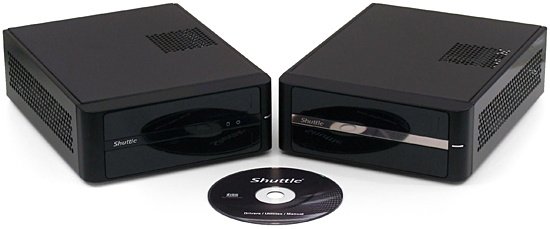Shuttle XS29F: Is VIA's Nano Processor Powerful Enough?
The Verdict
We set out today to figure out if the fanless, ultra low-power Shuttle XS29F book-sized PC was really powerful enough for the simple daily tasks of typical office systems, but we faced several hurdles in making any determination. While we did find that it consumed little electrical power, we also found that it offered little computational power.
Benchmarks show that anyone who thinks the Atom is barely sufficient will be sorely disappointed by the Nano. But our own experience was even more revealing. Such a simple task as switching between open windows was often an annoyingly long experience when using the U1700-based system. Double-clicking a program and waiting several seconds before the loading window appeared felt like millennia. Watching as it took nearly an hour to convert a five minute video from DVD to a more Web-friendly format was almost as exciting as viewing a typical PowerPoint presentation. Running Vista on a 1 GHz VIA Nano processor actually felt like running Vista on a 1 GHz processor, and there’s a reason most people don’t run Vista on their old Pentium III systems.
The Atom 330, on the other hand, was almost acceptable, switching between windows in almost real-time and loading program launch windows fast enough that we didn’t have to question whether or not we really double-clicked the icon. The slow hard drive still made us wait for some programs to load, but at least we could see that the system was doing something. In that respect, the Atom felt at least 50% faster than the Nano.
To get back to the original question, is the XS29F really fast enough for daily office duty? In our opinion, it’s only fast enough for the most patient user. Most office personnel will likely require a machine of at least similar performance to the Atom-powered X27D to be truly satisfied with their desktop computing experience.
Get Tom's Hardware's best news and in-depth reviews, straight to your inbox.
-
Wouldn't this just be a linux-only machine then? I can't possibly see any other use for it other than maybe a childs pc or a general "Internet & Email only" PC.Reply
-
pakardbell486dx2 This may be a dumb question, but why was Xp not used for this test? Clearly "just barely" wont work for people who spend their hard earn money on something like this. Maybe the celeron is ok for vista basic but the atom and nano platforms are just not good enough for Vista. If I can make an analogy comparing Vista and Atom/Nano it's like an old 73' Corolla trying to haul ten tons uphill.Reply -
tacoslave amd huron platform thats all i have to say i want to see it benched see how it stakes up.Reply -
Blueridge I agree that the major drawback of this review is the use of Microsoft Vista. I think that Windows XP Home edition for ULPC or a netbook spin of a linux distro (e.g. Ubuntu) would have been a much better choice for this review, especialy since is very well known that Vista is just not the right choice for netbooks (or nettops). Some time ago I read several reviews of the nano processor, based on Win XP and they performed more than OK, they were even suitable for a small HTPC at that time (the toughest challenge was DVD playback back then) and with a better chipset would have performed even netter. But this happens when a resource hungry OS like vista is used... just my 2 cents.Reply -
HalfHuman i guess a windoze xp or 7 would be a lot better to use with this kind of hardware. in fact i cannot think at a more inapropriate os to run on a nentop than vista. :)Reply
maybe the performance delta would be the same but the usability would be more than "acceptable".
regarding the "benchmarking" stuff... i do not think that anybody sane would buy a nettop to use it for hardcore photo editiing or transcoding.
if i'd buy a nettop i'd be interested in several factors:
- to be powerfull enough for office work and maybe hd playback
- to use as little power as possible (which nano does nicely) as this kind of device would be rarely powered down
- to be silent (which nano is)
i think that performance per watt is irrelevant here as a system like this is not meant to be "performant". i think that the one that uses less watts, has more features is queter wins here.
my take on this is that via has a very nice platform and nano wins even if it's not the fastest. -
Blueridge I just took a look at Via's website and it seems that Nano is available in flavors up to 1.8GHz. I wish a machine based on such a processor was used for this review, though I think the main issue here is availability.Reply -
HalfHuman i would be nice to see some noise evaluations, some hd playback tests... some appropriate os. :)Reply -
eddieroolz The Nano would be the perfect computer to just leave it powered on, seeding torrents and such.Reply

